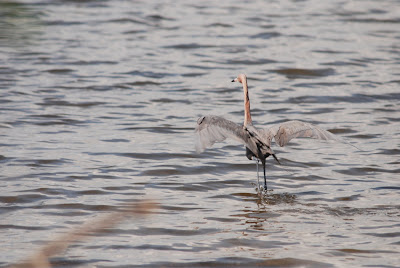For my father, whose borrowed elements have returned to the biosphere.
 Thomas D. Bain Jr.
Thomas D. Bain Jr.1930-2009
Solace in nature...
 Sunrise over Merritt Island where the Space Shuttle is prepped and waiting to slip the surly bonds of Earth, center horizon.
Sunrise over Merritt Island where the Space Shuttle is prepped and waiting to slip the surly bonds of Earth, center horizon.

Manatee browsing algae along riverside rip-rap, Haulover Canal, Merritt Island.
These gentle giants barely ripple the surface of warm water rivers and springs they visit during wintertime.
These gentle giants barely ripple the surface of warm water rivers and springs they visit during wintertime.

 This live oak, festooned with Spanish moss and resurrection fern, was a large tree when fabled Naturalist William Bartram is said to have passed by during his travels in 1774.
This live oak, festooned with Spanish moss and resurrection fern, was a large tree when fabled Naturalist William Bartram is said to have passed by during his travels in 1774. Gopher tortoise at home on remnant ancient sand dunes of the Lake Wales Ridge, central Florida. This 14 inch animal may be over sixty years old.
Gopher tortoise at home on remnant ancient sand dunes of the Lake Wales Ridge, central Florida. This 14 inch animal may be over sixty years old. Florida Scrub Jay. Gangs of rare jays find young pine clearcuts a substitute for diminishing oak scrub.
Florida Scrub Jay. Gangs of rare jays find young pine clearcuts a substitute for diminishing oak scrub. Native oak scrub (at right), one of the most endangered habitats in Florida, supports more endemic species than any other. Citrus at left. We are looking down slope from the crest of the Lake Wales Ridge toward Archibold Biological Research Station, near Avon Lake, central Florida.
Native oak scrub (at right), one of the most endangered habitats in Florida, supports more endemic species than any other. Citrus at left. We are looking down slope from the crest of the Lake Wales Ridge toward Archibold Biological Research Station, near Avon Lake, central Florida. Florida oranges brighten breakfast tables everywhere. Oak scrub endemics are dozed aside to make room for citrus as demand continues.
Florida oranges brighten breakfast tables everywhere. Oak scrub endemics are dozed aside to make room for citrus as demand continues.So many families thread connections to Florida from around the United States and Canada, the place has become a central element in the tapestry of the American experience. Aged generations move there for warm retirement, younger generations follow for fun and sun. Native flora and fauna move aside or integrate along the margins of human habitats.
Many families; Snowbirds and vacation visitors, know Florida only marginally; the beaches, the roadsides, the social environments and cultural attractions. My family is firmly threaded in this tapestry, but I was fortunate to have been introduced to the depths of the Florida experience; the plants, the birds, the mammals, the geology and fossils, and a little history. My grandfather and father reached into the sands, the skies, and the waters of Florida. I have followed them. Florida is a remarkable place, the more so beyond the margins.
My connections with Florida began during my teen years visiting grandparents wintering in Daytona. My father followed them, building and retiring in Sebring, Florida. I have followed for family and natural history visits, but I will not pursue retirement there where there is now too little room for me with surviving native species. I will visit again and again with my son and I hope he will know, appreciate, and help to protect natural Florida.
 Lawn art, life-size Aluminum wildlife (non-native) for sale.
Lawn art, life-size Aluminum wildlife (non-native) for sale.Visitors, transplants, and immigrants bring their diverse arrays of cultural influences into the depths of Florida. More and more habitat is taken for human environments, increasingly artificial and surficial. Still, there is much of native Florida left to inspire young and old, and many wonderful people pulling together for habitat for all.
 Tom Bain Jr. standing on a ladder leading to service on one of many Habitat homes he helped to build with Florida families.
Tom Bain Jr. standing on a ladder leading to service on one of many Habitat homes he helped to build with Florida families.Tom Bain Jr. was born into that muscular post-war generation that wrestled abundant living from global tensions and globalizing prosperity. Dad rounded his life by helping to build scores of homes in central Florida, working with the generous folks of Habitat for Humanity, Highlands County, Florida. Dad, full of years--full of experience, slipped the surly bonds of Earth March 8, 2009.
Contributions in Dad's name to Habitat for Humanity are greatly appreciated by the Bain family and by many deserving Florida families helping to build their own futures.









